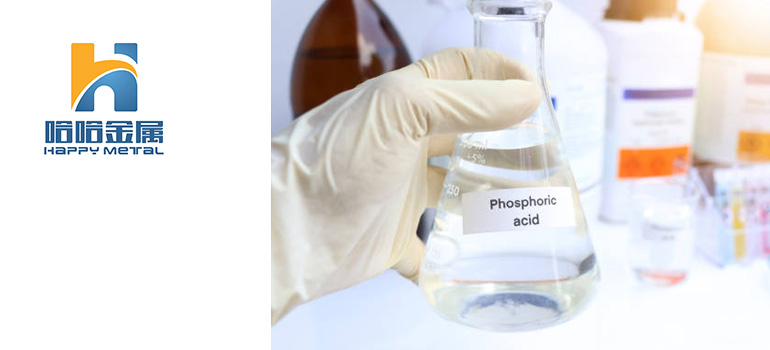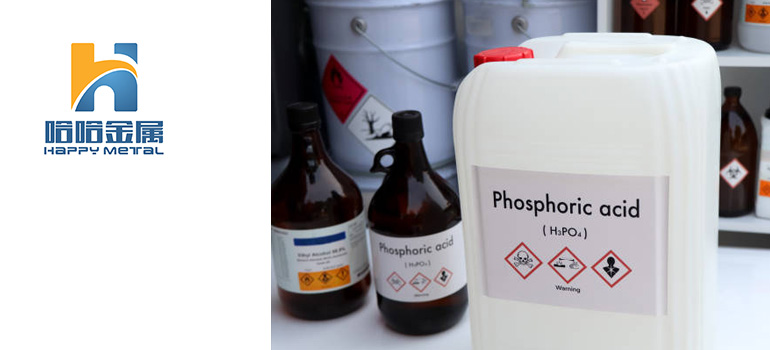Summary:
Understanding Quality Standards for Food Grade Phosphoric Acid: A Comprehensive Guide
What is Food Grade Phosphoric Acid
Key Quality Standards for Food Grade Phosphoric Acid
Compliance with Quality Standards for Food Grade Phosphoric Acid
Impact of Quality Standards on Food Safety
What is Food Grade Phosphoric Acid?
Food grade phosphoric acid is a high-purity form of phosphoric acid specifically produced for use in food and beverage applications. Unlike its industrial counterparts, which may contain impurities and contaminants, food grade phosphoric acid meets stringent quality requirements to ensure it is safe for human consumption. This compound is commonly used in the food industry as an acidulant, flavoring agent, and pH control agent. Its purity and safety are essential for maintaining the overall quality and safety of the final food products.
Applications of Food Grade Phosphoric Acid
Food grade phosphoric acid has a variety of applications in the food and beverage industry. One of its primary uses is as an acidulant in soft drinks, particularly cola beverages, where it imparts a tangy flavor and helps balance sweetness. It is also used in processed foods to adjust pH levels, which can enhance preservation and prevent spoilage. Additionally, food grade phosphoric acid is employed in cheese production to aid in coagulation and improve texture. Its versatility makes it an invaluable ingredient in many food formulations.
Importance of Quality Standards
Quality standards for food grade phosphoric acid are crucial for several reasons. Firstly, they ensure that the acid is free from harmful contaminants that could pose health risks to consumers. These standards also guarantee that the acid performs consistently in food applications, maintaining the desired flavor and texture. Adhering to quality standards helps manufacturers avoid costly recalls and ensures compliance with food safety regulations. In essence, rigorous quality standards are fundamental to safeguarding public health and maintaining consumer trust in food products.
Key Quality Standards for Food Grade Phosphoric Acid

Industry Regulations and Guidelines
Food grade phosphoric acid must adhere to strict industry regulations and guidelines to ensure its safety and efficacy in food applications. Regulatory bodies such as the U.S. Food and Drug Administration (FDA), European Food Safety Authority (EFSA), and other national and international standards organizations set forth specific requirements for food-grade substances. These regulations typically specify permissible levels of impurities, required purity percentages, and detailed labeling information.
For example, the FDA classifies food-grade phosphoric acid as Generally Recognized as Safe (GRAS) when used within specified limits. This classification means that phosphoric acid, when used correctly, is considered safe for human consumption. Similarly, the EFSA sets rigorous standards for the use of phosphoric acid in the European Union, ensuring that it meets safety and quality requirements before it can be used in food products.
Certification Processes
To meet the stringent quality standards for food grade phosphoric acid, manufacturers often seek certification from recognized organizations. Common certifications include ISO 9001 for quality management systems and ISO 22000 for food safety management systems. These certifications demonstrate that the manufacturer adheres to high standards in production, quality control, and safety measures.
Additionally, certifications from industry-specific bodies, such as the NSF International or the American Chemical Society, can further validate the quality and safety of food grade phosphoric acid. Achieving these certifications involves regular audits, stringent testing, and continuous improvement practices to ensure that the product consistently meets all required standards.
Common Quality Tests and Criteria
To verify that phosphoric acid meets food grade standards, several quality tests and criteria are commonly employed. These include:
Purity Testing: Food grade phosphoric acid must have a high level of purity, typically around 85% or higher. Tests such as titration and chromatography are used to assess the concentration of phosphoric acid and detect any impurities.
Heavy Metal Analysis: To ensure safety, the presence of heavy metals such as lead, arsenic, and cadmium is tested. These metals must be below specified limits to prevent contamination of food products.
Contaminant Screening: Food grade phosphoric acid is screened for contaminants like microbial organisms or organic compounds that could compromise food safety. This includes tests for bacteria, molds, and other potential contaminants.
pH Level Measurement: The pH level of phosphoric acid is measured to ensure it falls within the acceptable range for its intended use in food products. This helps maintain the desired acidity and effectiveness in food processing.
By adhering to these quality tests and criteria, manufacturers can ensure that their food grade phosphoric acid meets the necessary safety and performance standards, ultimately protecting consumers and maintaining the integrity of food products.
Compliance with Quality Standards for Food Grade Phosphoric Acid
Ensuring Compliance in Manufacturing
Compliance with quality standards for food grade phosphoric acid starts at the manufacturing level. Manufacturers must implement stringent quality control measures throughout the production process to ensure the final product meets regulatory requirements. This involves:
Raw Material Sourcing: Ensuring that all raw materials used in the production of phosphoric acid meet purity and safety standards. Suppliers should be vetted and regularly audited to maintain high-quality input.
Controlled Production Processes: Implementing rigorous production protocols to prevent contamination and maintain consistent quality. This includes maintaining clean and well-maintained equipment, and using validated procedures for mixing and processing.
In-Process Quality Checks: Conducting regular quality checks during production to monitor parameters such as concentration, pH, and impurity levels. This helps catch any deviations from standards before the product reaches the final stage.
Record Keeping: Keeping detailed records of production batches, quality control tests, and corrective actions taken. These records are essential for traceability and for demonstrating compliance during audits.
Role of Quality Control in Compliance
Quality control (QC) plays a critical role in ensuring compliance with quality standards for food grade phosphoric acid. A robust QC system involves:
Routine Testing: Performing routine tests on samples from each batch to ensure they meet specified quality criteria. This includes tests for purity, heavy metal content, and microbial contamination.
Calibration of Equipment: Regularly calibrating testing equipment to ensure accuracy. Proper calibration is crucial for reliable test results and for maintaining product consistency.
Training and Expertise: Ensuring that QC personnel are well-trained and knowledgeable about industry standards and testing methodologies. Experienced staff are better equipped to identify potential issues and implement corrective measures.
Continuous Improvement: Implementing a continuous improvement process to refine quality control practices and address any emerging issues. This involves regularly reviewing and updating QC procedures based on feedback and industry developments.
Case Studies of Compliance Challenges
Examining real-world case studies can provide valuable insights into compliance challenges faced by manufacturers of food grade phosphoric acid. Some common challenges include:
Contamination Issues: Instances where contamination occurred due to inadequate cleaning procedures or raw material quality issues. These cases highlight the importance of rigorous hygiene practices and thorough supplier vetting.
Regulatory Changes: Situations where changes in regulations required rapid adjustments in production processes or documentation practices. Staying updated with regulatory changes and being adaptable is key to maintaining compliance.
Product Recalls: Cases where non-compliance led to product recalls, which can be costly and damaging to a company’s reputation. Effective quality control and compliance strategies help prevent such scenarios.
By learning from these challenges, manufacturers can develop more effective strategies for ensuring compliance with quality standards and safeguarding their products against potential issues.
Impact of Quality Standards on Food Safety
Preventing Contamination and Ensuring Purity
Quality standards for food grade phosphoric acid are fundamental in preventing contamination and ensuring the purity of food products. Strict adherence to these standards minimizes the risk of introducing harmful substances into the food supply. Here’s how quality standards play a crucial role:
Purity Requirements: Food grade phosphoric acid must meet high purity standards, typically around 85% or higher. This reduces the risk of contaminants that could affect food safety. Manufacturers perform extensive testing to ensure that the phosphoric acid is free from harmful impurities like heavy metals and organic contaminants.
Microbial Safety: Quality standards include requirements for microbial testing to ensure that the phosphoric acid is free from pathogens and spoilage organisms. This helps prevent foodborne illnesses that could arise from microbial contamination.
Production Controls: Implementing stringent production controls and regular monitoring helps prevent cross-contamination during the manufacturing process. This includes maintaining clean facilities, using sanitized equipment, and controlling environmental factors such as temperature and humidity.
Effects on Product Quality and Safety
Adhering to quality standards directly impacts the overall quality and safety of food products. Here’s how:
Consistency and Reliability: Quality standards ensure that food grade phosphoric acid maintains consistent performance in food products. This reliability is crucial for achieving desired flavors, textures, and preservation effects in foods and beverages.
Shelf Life and Stability: By adhering to quality standards, manufacturers can enhance the stability and shelf life of food products. Properly regulated phosphoric acid helps maintain the correct pH levels, which prevents spoilage and extends the shelf life of products.
Consumer Confidence: High-quality standards contribute to consumer confidence in food safety. When consumers know that food products are made with ingredients that meet strict quality criteria, they are more likely to trust and purchase those products.
Regulatory Bodies and Their Roles
Several regulatory bodies oversee the implementation and enforcement of quality standards for food grade phosphoric acid, playing a critical role in ensuring food safety:
U.S. Food and Drug Administration (FDA): The FDA sets regulations and guidelines for food grade phosphoric acid in the United States. The agency monitors compliance and conducts inspections to ensure that manufacturers adhere to safety and quality standards.
European Food Safety Authority (EFSA): In the European Union, the EFSA is responsible for evaluating and approving food grade phosphoric acid. The EFSA’s assessments help ensure that phosphoric acid used in food products is safe and compliant with EU regulations.
Other National and International Bodies: Various other organizations, such as Health Canada, the Codex Alimentarius Commission, and national food safety authorities, also play roles in establishing and enforcing quality standards for food grade phosphoric acid.
These regulatory bodies conduct rigorous evaluations, provide guidelines, and enforce compliance to protect public health and ensure that food products containing phosphoric acid are safe for consumption.




